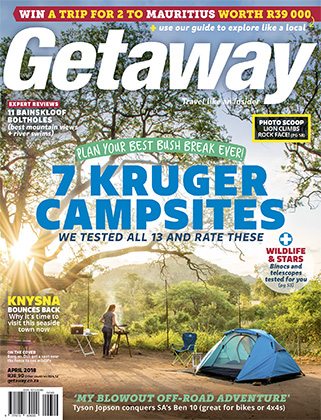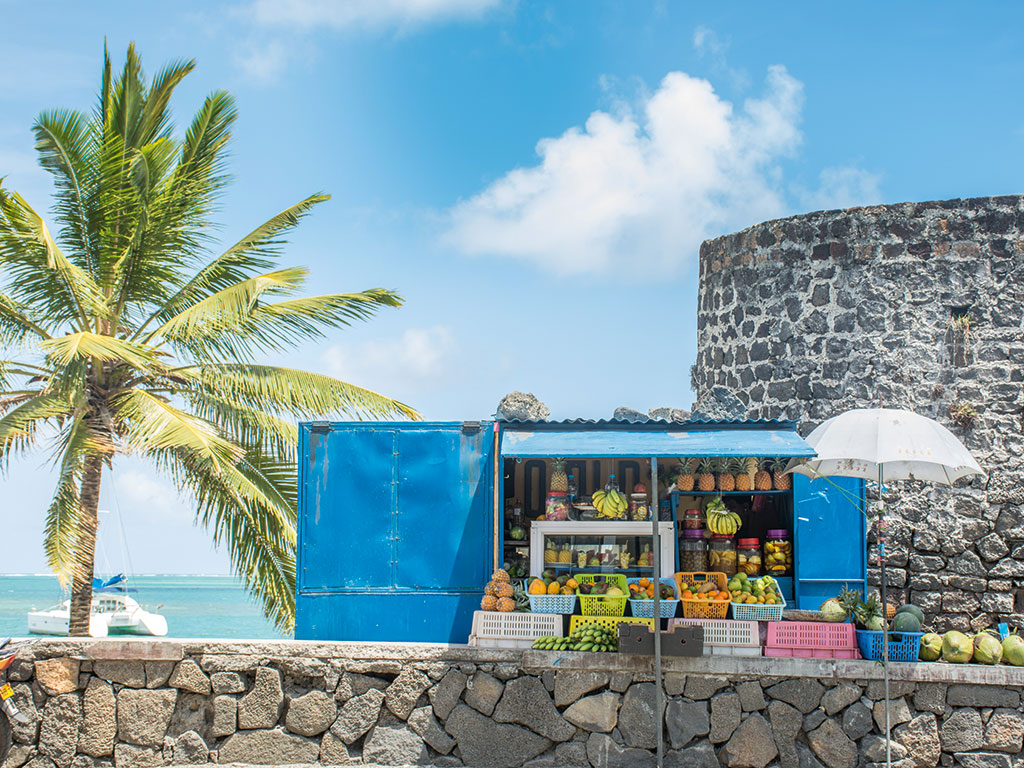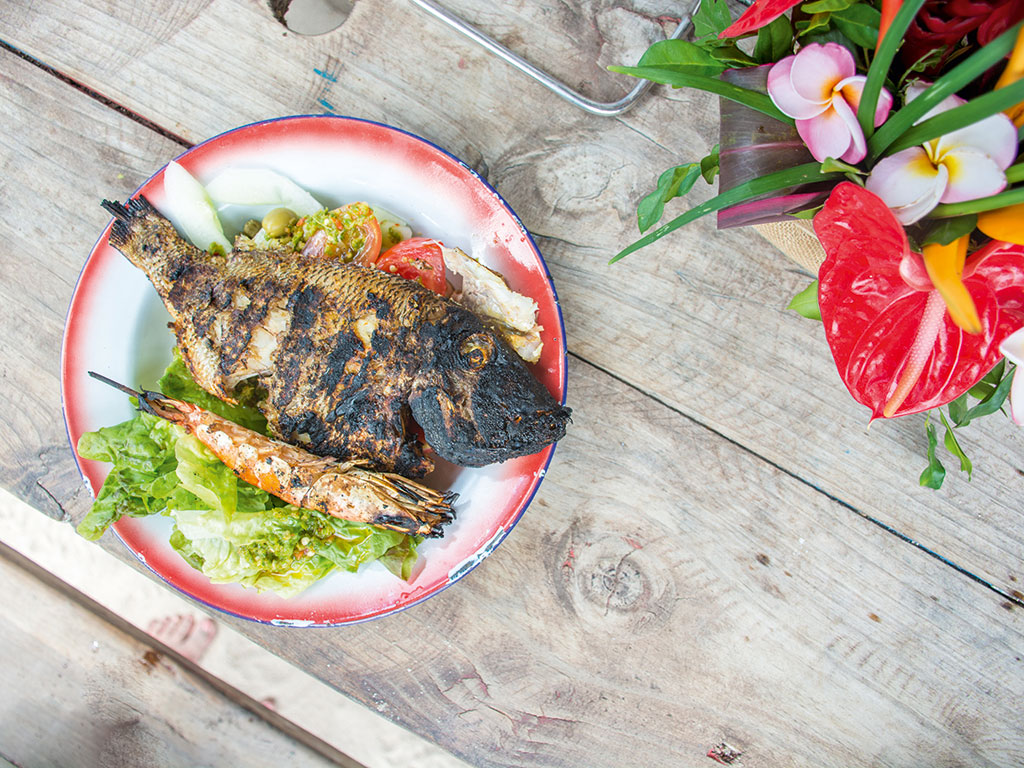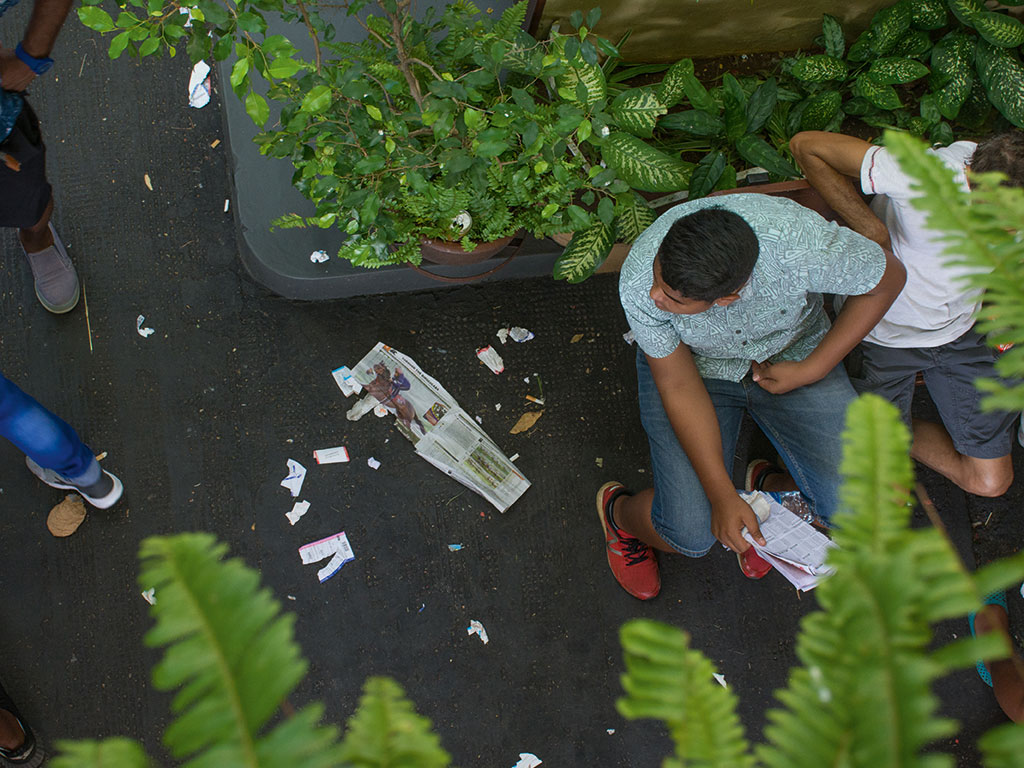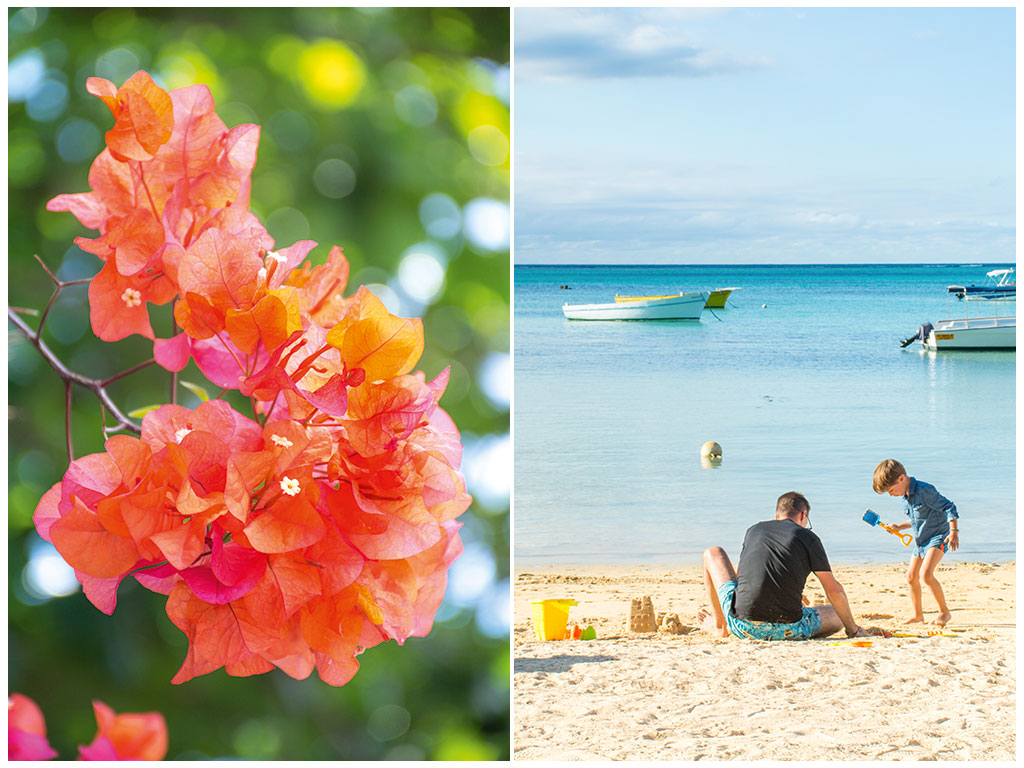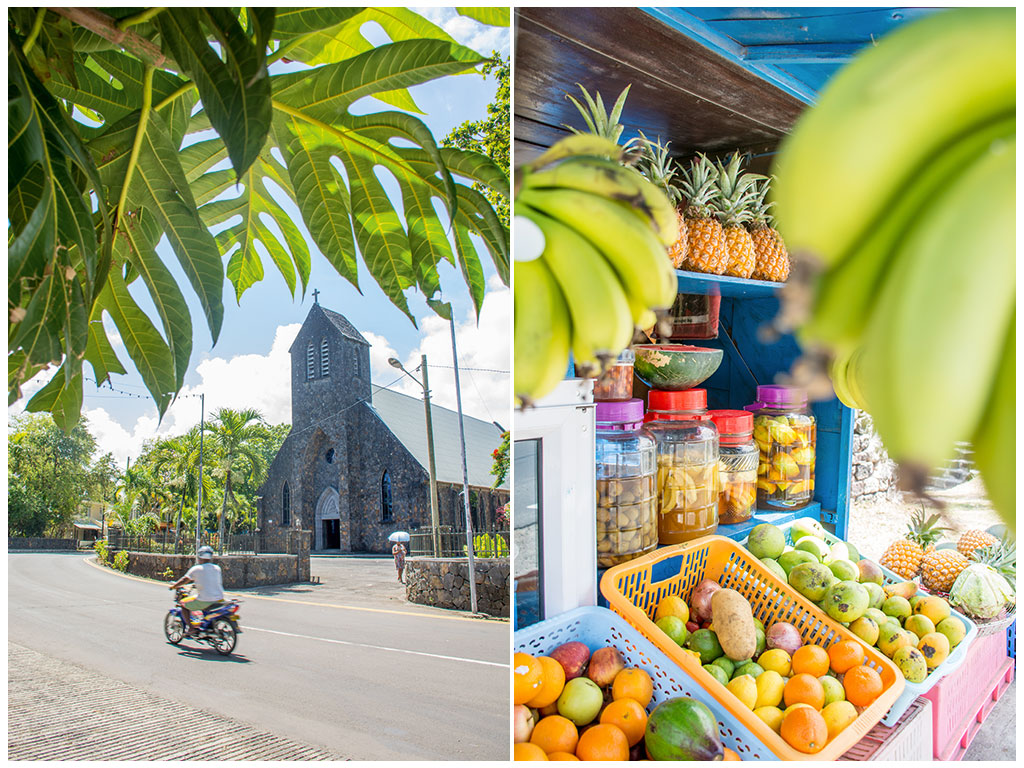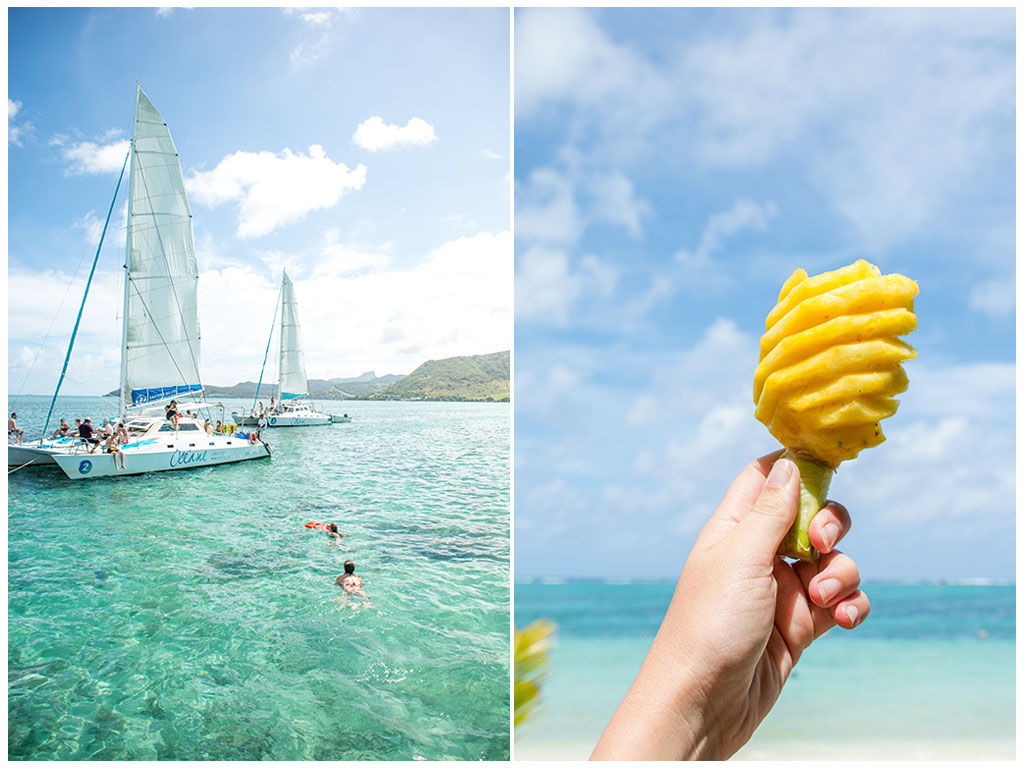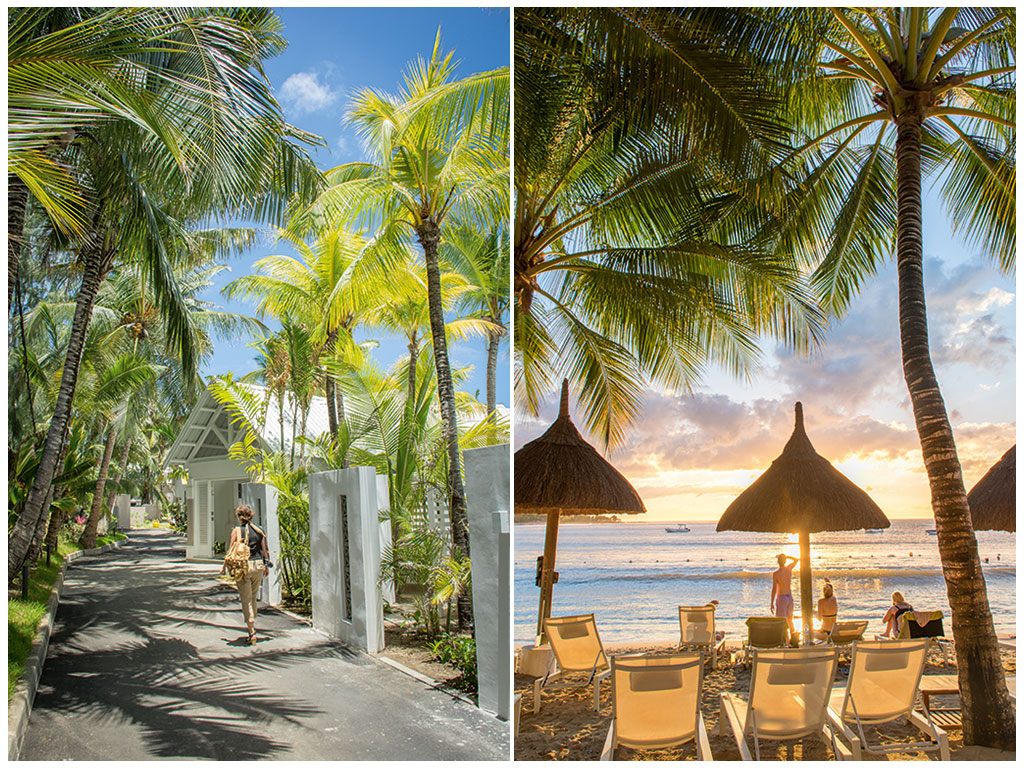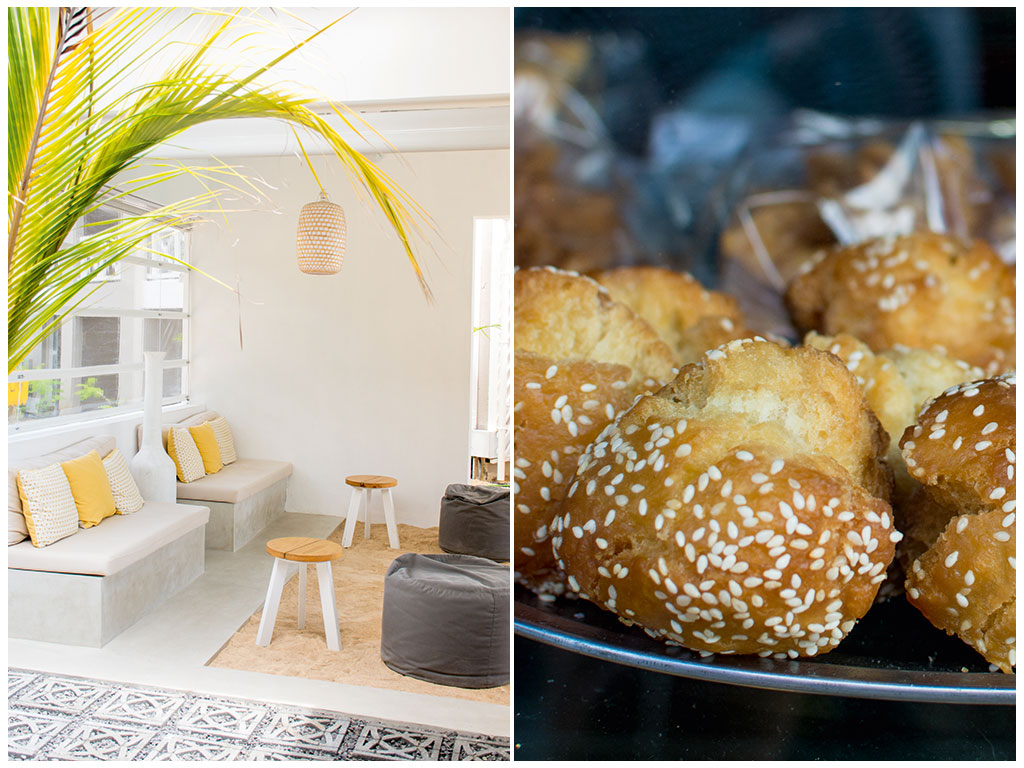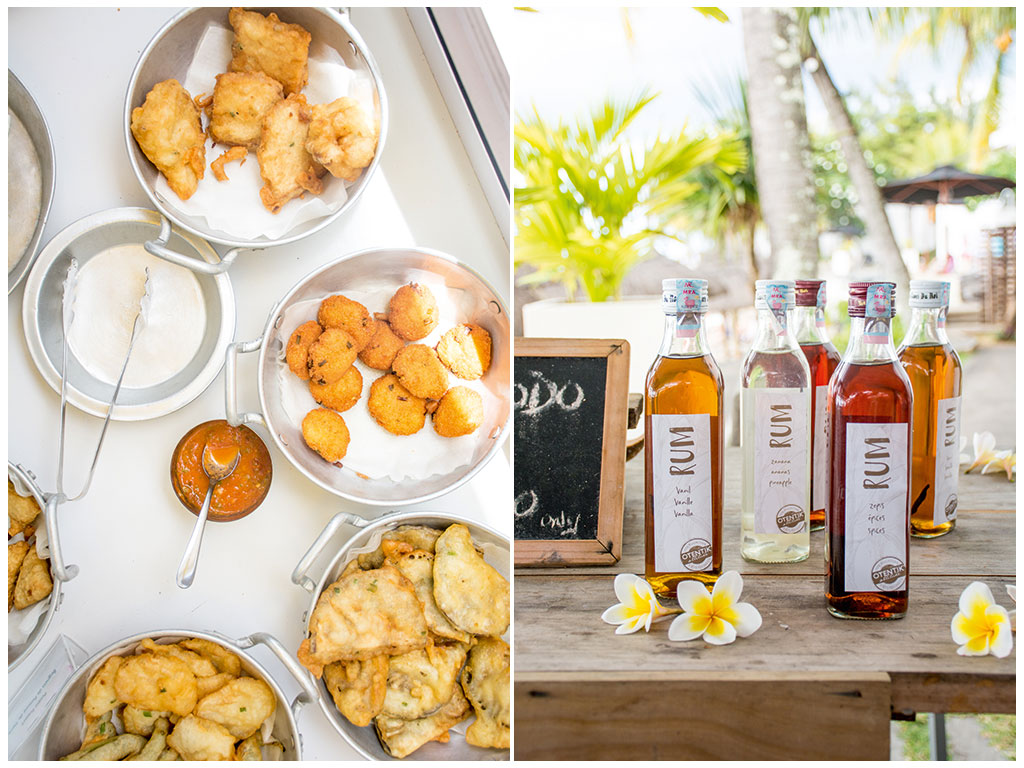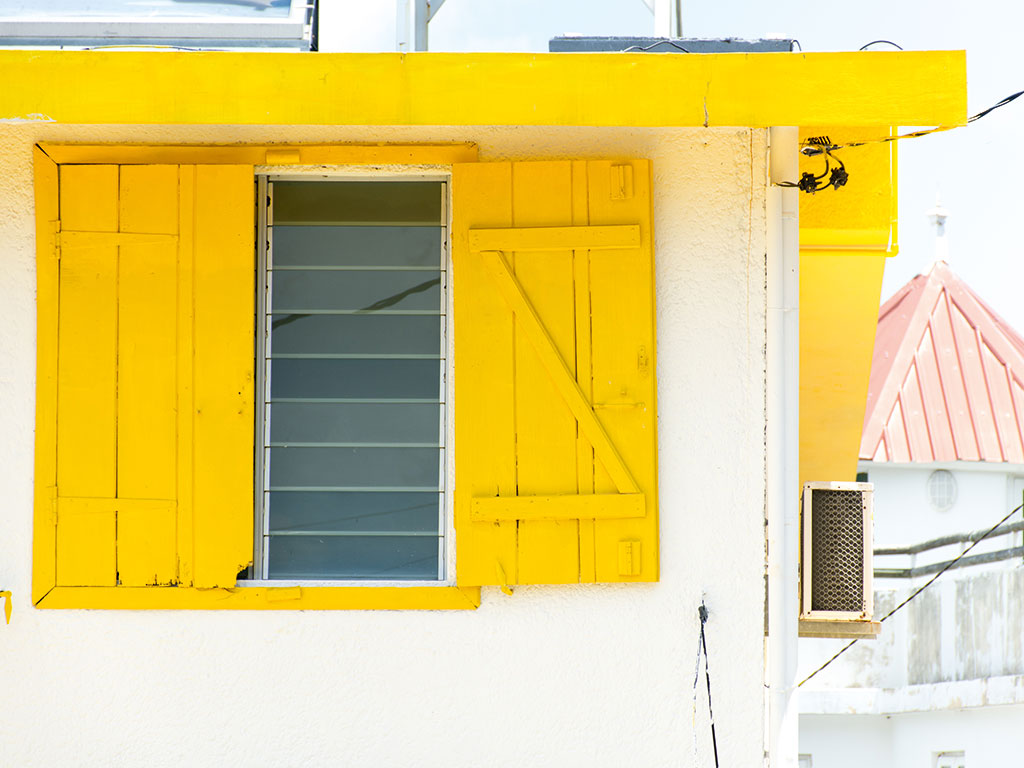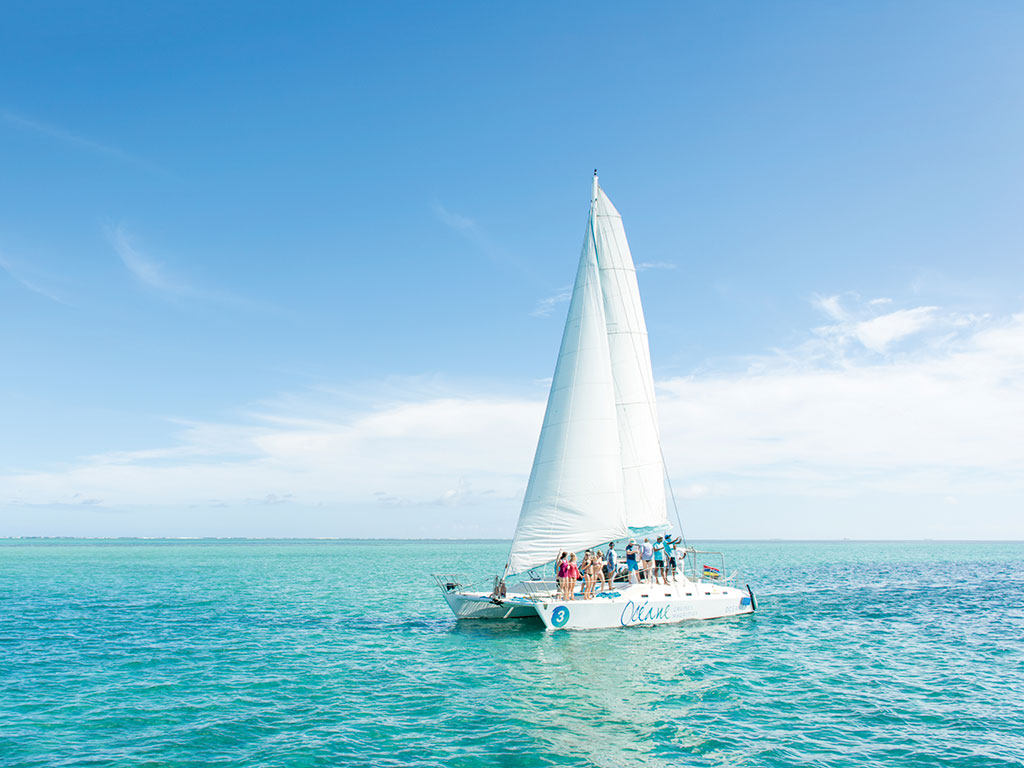It’s hard to beat the ease (and price) of a package holiday at a resort, but where’s the local flavour?
We’ve found a way to get the best of both worlds in Mauritius. Words and photographs by Melanie van Zyl.

A roadside stall in Trou d’ Eau Douce was one of the stops on an app-guided walk around the village. Apart from fresh fruit, there were various pickles for sale. Image credit: Melanie van Zyle
How many people leave the resort on holiday? I’m not saying you have to. Sometimes it’s a relief to only worry about the kind of cocktail you should order next (experience says always a piña colada if you’re on a tropical island) while the kids run wild in the beautiful and safe resort grounds. In fact, many resorts are designed so you don’t have to leave – everything is just an arm-stretch away.
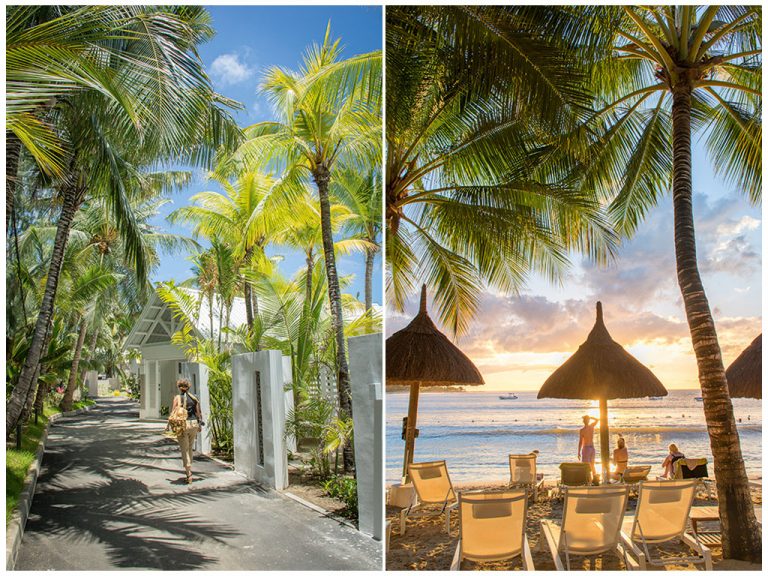
Returning ‘home’ under a canopy of palms at the Tropical Attitude hotel ; a lazy day’s end on the west coast at The Ravenala Attitude in Turtle Bay Image: Melanie van Zyl
However, if you’re like me, it’s hard to spend seven full days on the same beach lounger, on the same beach, in front of the same hotel. I’ve always believed that to get to know a place is to walk it. And eat it. You can’t really do that inside a resort and so I’ve always been sceptical of those ubiquitous one-week-in-paradise package deals.
Named as one of Lonely Planet’s top 10 places to visit this year, Mauritius is already a popular destination for South Africans – in 2017, the island welcomed 112129 tourists from this country. It’s a well-known haven for holidaymakers seeking a relaxed break in a resort where everything is laid on, but then I found a hotel chain that actually encourages you to leave the grounds and explore the island.
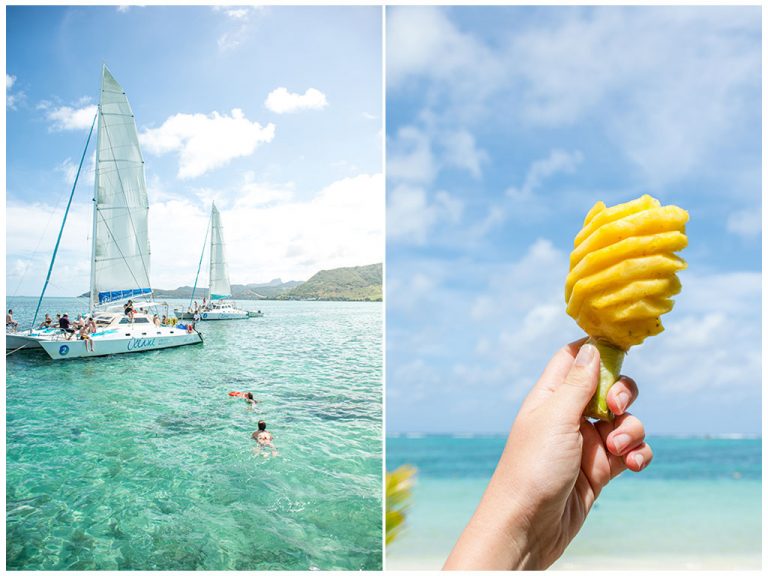
No trip to Mauritius is complete without chilling at sea on a catamaran; a pineapple snack bought from a passing motorbike vendorImage: Melanie van Zyl
‘Everything is organised so that our guests’ stay is a memorable rendezvous with the genuine Mauritius,’ says the CEO of Attitude Hotels, Jean-Michel Pitot. The concept is straightforward: give guests the opportunity to live like locals during their stay on the island. It’s a tough thing to deliver, as it runs the risk of coming across as phoney and forced.
At the Attitude resorts, the Mauritian element is, admittedly, cleaner and more refined than out on the streets, but they’ve done a respectful job of incorporating Creole culture by serving traditional cuisine, showcasing locally inspired decor and artworks by resident artists. They also provide an easy way for guests to experience the real deal: Otentik Discovery, a geo-location smartphone app that helps you explore the island on your own. Once downloaded, you can choose to follow one of 11 curated itineraries.

The Attitude hotels offer local rum tastings and street-food snacks. Image: Melanie van Zyl
In Port Louis, I set off with my camera, my phone and 200 rupees (about R80) in search of lunch on the self-guided street-food walking tour. Lauded as one of the top destinations for street food by CNN and the UK’s Telegraph, walking the capital is not only delicious, it’s a fascinating history lesson.
Mauritius has emerged a gleaming gemstone after all the pressures exerted on it over the past 500 years. The Arabs, Portuguese, Dutch, French and English all left their mark on this Indian Ocean island, but the contemporary hybridisation and thriving Creole culture is largely due to slavery and the indentured labourers who worked the sugar-cane fields.
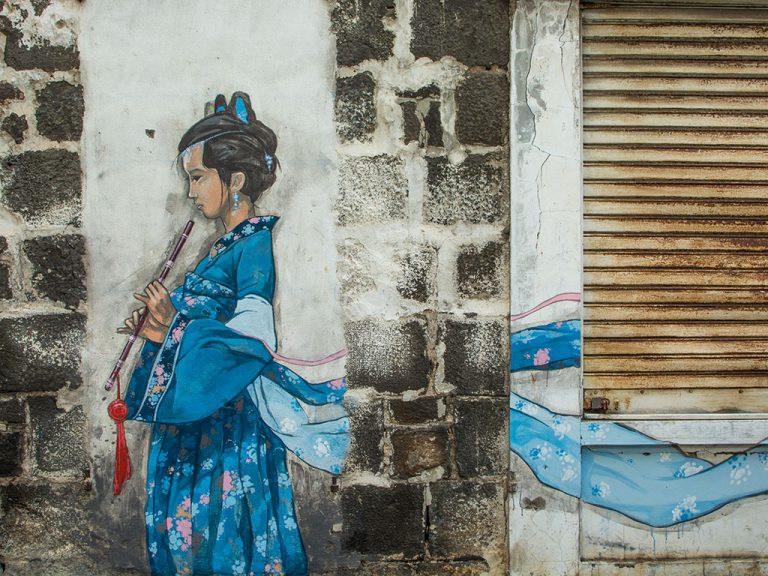
Gorgeous street art in Port Louis Image: Melanie van Zyl
Starting at Aapravasi Ghat (the historical landing port for the thousands of Chinese and Indian indentured workers), the walking tour comprises 12 stops, including the buzzing Victorian-era market over flowing with tropical fruit and giant vegetables, and hole-in-the-wall Asian bakeries serving sticky sesame-studded buns in the Chinatown district.
I ended off with a flavoursome, stupidly cheap (R6) veggie roti from Roti Aka Vinoda, eaten in the shade of a banyan tree in the Company Garden. I was surprised at the amount of signage in English and felt at ease roaming the streets by myself.
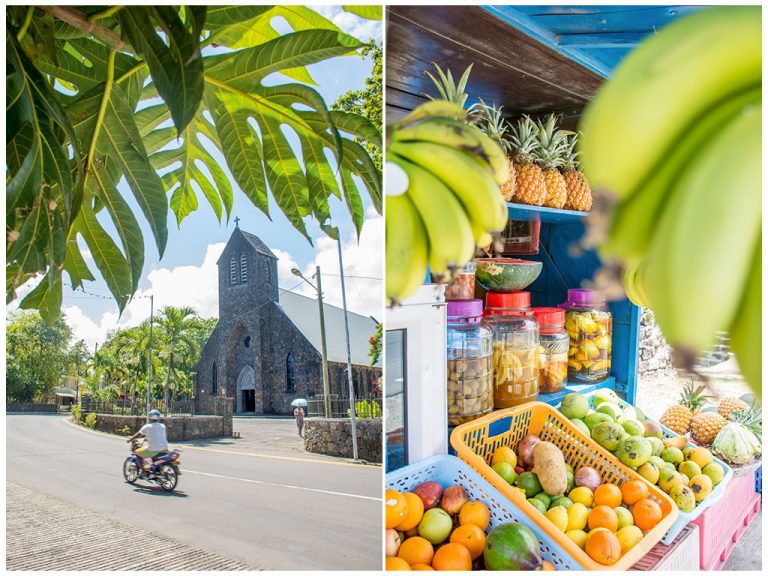
Despite its clasic old look, Notre Dame de Bon Secours in Trou d’Eau Douce was built quite recently; fruit at a roadside stall in Trou d’Eau Douce. Image: Melanie van Zyl
Because it was hot and I’m a sucker for natural sweetness, I also scooped up a frosty treat known as a sorbet rapé from a motorbike vendor – ice crushed in a screwdriver-like press fixed to the back of his bike and favoured with sugar-cane syrup.
I sipped on this while contemplating the city’s abundant and intricate street art: an astronaut perched high up on an abandoned building; a whale swooping over the wall of a bus shelter; a colourful bird perched just behind a traffic light.
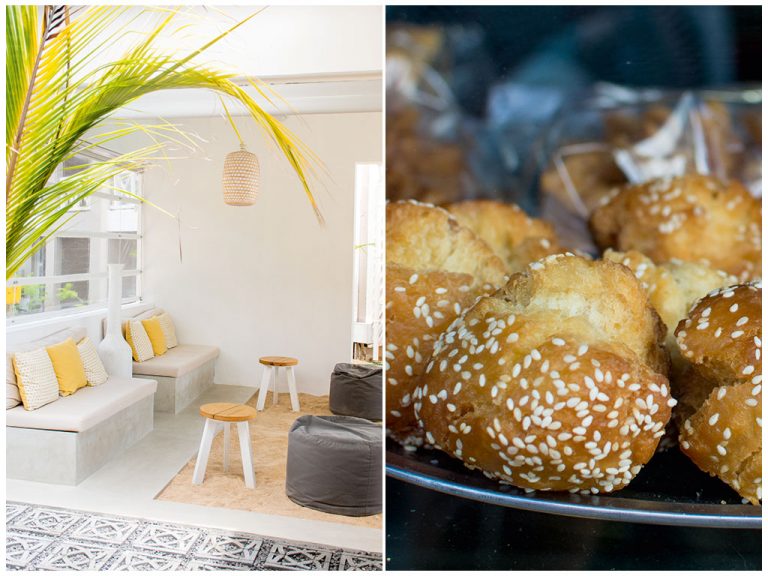
The welcome room at the Tropical Attitude hotel, where check-in comes with a tasty lemongrass drink; sesame-studded balls from a Chinese biscuit shop in Port Louis. Image: Melanie van Zyl
There’s an amazing blend of cultures in this country, where French-style cheek kissing meets scenes of women swimming fully clothed in the ocean. And if it’s beaches you want, of course they’re here in abundance, and no less enticing are the fishing villages that come with them.
The east side of Mauritius is known as the ‘Wild Coast’ (not half as ferocious as the South African version) and although it has its share of luxury resorts, it seems tourists tend to stay put, so the area feels quite untouched by the rampant tourism of the north and south coasts.
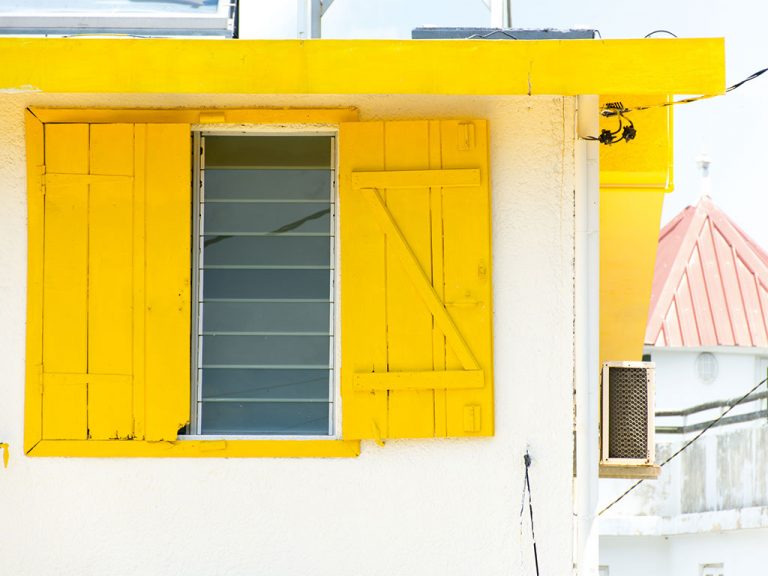
Happy shades in the charming Trou d’Eau Douce Image: Melanie van Zyl
Here in Trou d’Eau Douce, I tentatively rented a scooter (the single-lane roads can be harrowing) and set off to explore the public beaches. Once I got into the groove, the drive wasn’t too terrifying.
My app-led tour included stops at an old sugar mill, a street vendor selling coconut cakes and the lily-filled spring that the village is named after.
I pulled over at Belle Mare, a fine stretch of golden sand, and joined locals picnicking and swimming in the blue water. A motorcycle vendor puttered by and sold me some pineapple, cut so all the prickly knots were removed and the stem served as a stick to hold it. Back on my scooter, temples blurred by and sugar-cane trucks rumbled past, loaded to the brim.
Returning to my resort, there was something comforting about going home to a familiar space – the rustling of palm trees in the breeze and piña coladas on tap. I realised I’d grown to quite like having a comfortable air-conditioned room, while also knowing I could do it all again tomorrow and venture out into the chaos … if a catamaran trip doesn’t lure me in the other direction.
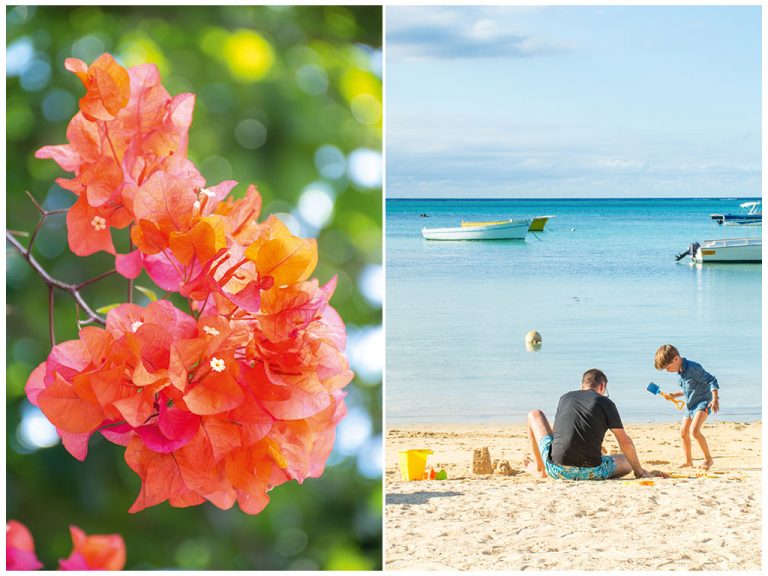
Bright bougainvillea mirrors the colourful streets; family time on the beach at the northern tip of Mauritius Image: Melanie van Zyl
Plan your trip
Getting there
It’s a four-hour hop on British Airways or Air Mauritius, departing from Joburg, Durban and Cape Town. No visas are required. From R5539 pp, travelstart.co.za
Need to know
Fresh fruit costs between R5 and R9 a piece. A mixed dim sum bowl from a street cart is about R20, while most restaurants charge about R80 for fried noodles and around R147 for fresh grilled fish (dorado). I paid R74 for a two-kilometre taxi ride (I suspect this was too much); unless you’re staying in the south, airport transfers can be ludicrously expensive (about R735) so get a hotel deal that includes this.
When to go
The rainy season is from January to March (often there are cyclones) and the east coast gets very windy in July and August (great for kite-surfers).
Stay here
There are nine Attitude hotels on the island. These are the ones I stayed at: Tropical Attitude, on the quieter east coast next to the fishing village Trou d’Eau Douce, is a smaller three-star resort with free daily shuttles to Île aux Cerfs island. It’s recently been refurbished and has great rooms that face sunrise. There are two restaurants, but you can easily (and should) explore the village for dining options. A seven-night package in June, including flights from Joburg, costs from R12265 DB&B. holidayfactory.co.za
Zilwa Attitude is a bigger four-star resort (with 214 rooms) on the north coast alongside a lovely shallow lagoon (safe for kids). It has four pools and a host of free activities, including watersports as well as Creole lessons, cooking classes, local rum tastings and movies on the beach. A seven-night package, with flights from Joburg, costs from R18036 DB&B (valid 23 June – 14 July 2018). thompsons.co.za
The Ravenala Attitude, also a four-star, is on the northwest coast, and reminded me of a cruise ship – it has 272 suites, two pools, 10 restaurants and its own nightclub, but you never feel like one of 500 people roaming the lush gardens and there’s always a lounger free on the beach. A seven-night package, with flights from Joburg, costs from R16885 per person DB&B (valid 24 April – 28 September 2018), and includes snorkelling and a boat trip. thompsons.co.za
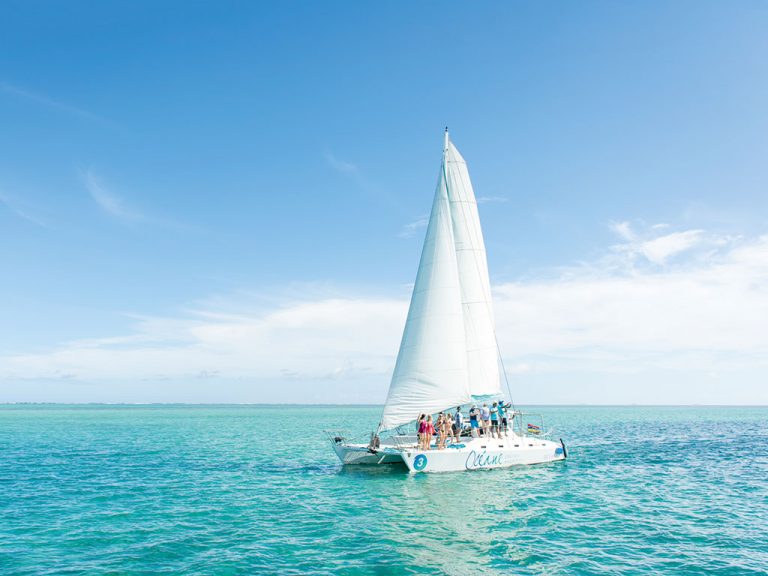
No trip to Mauritius is complete without chilling at sea on a catamaran. Image: Melanie van Zyl
Do this
Soak up history at Aapravasi Ghat in Port Louis. An amazing, expertly curated museum, this former immigration depot is a World Heritage Site. It’s a great way to familiarise yourself with the story of the island. Free entry. aapravasighat.org
See the Pamplemousses Garden, the oldest botanical garden in the southern hemisphere. Locals recommend you get a guide to explain the garden and flora to make the most of it; tours (R18) take about an hour. Entry is R73. ssrbg.govmu.org
Visit Champ de Mars on race day. Watching horse racing at the southern hemisphere’s oldest track makes for an entertaining afternoon. Mingle with locals and shout from the sidelines. Racing season runs from April to late November over weekends. Tickets for the general stands are R18 to R37; admission to the rest of the grounds is usually free. mauritiusturfclub.com
Catch a catamaran to Île aux Cerfs, an island off the east coast. Snorkel in the sea en route, marvel at waterfalls and eat a braai lunch on the boat. Most trips spend a little time on the island (half of which is a golf course and usually busy), where you can try one of the watersports on offer – parasailing seems to be the most popular. Bring shoes to swim in (there are sea urchins). The trip departs from the Tropical Attitude hotel and costs R585 pp, which includes lunch, beer and soft drinks. oceane.mu
Ride a scooter along the coast. It’s not likely you’ll meet many locals on the beaches in front of the resorts, so heading further afield is a great way to escape tourists. I loved exploring Belle Mare on the east coast. Scooter hire is about R550 a day – ask your hotel to recommend an operator.
Use the Otentik Discovery app to do a few self-guided walking tours, using your phone’s GPS but not any data. Free and available for Apple and iOS.
Apart from the Port Louis streetfood tour, I also explored the village of Trou d’Eau Douce – where I discovered Chez Noël Les Alizes, one of my favourite food experiences. A delectable lunch of dim sum parcels in a veggie broth cost R18.
Other tour options include a shopping excursion in Flacq, a sunset tour of scenic spots in Mon Choisy, a scooter trip to remote villages on the northeast coast and a drive around the Rivière du Rempart district.
This story appears in the April 2018 issue of Getaway magazine.
Our April issue features 13 campsites in Kruger National Park, a visit to Vietnam’s capital, Welcome Lishivha returns to Knysna one year after the fires and Melanie Van Zyl finds the best of both worlds in Mauritius, plus lots more.
